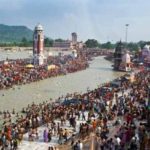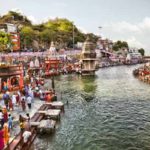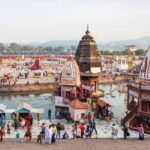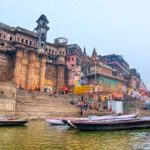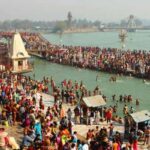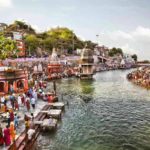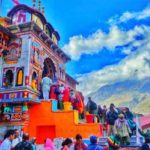Kumbh Mela
Kumbh Mela is a mass Hindu pilgrimages of faith in which Hindus gather to bathe in a sacred river. It is the world’s largest religious gathering. It is held every third year at one of the four places by rotation: Haridwar, Allahabad (Prayag), Nasik and Ujjain.
Thus the Kumbh Mela is held at each of these four places every twelfth year. Ardh (“Half”) Kumbh Mela is held at only two places, Haridwar and Allahabad, every sixth year. The rivers at these four places are: the Ganges (Ganga) at Haridwar, the confluence (Sangam) of the Ganges and the Yamuna and the mythical Saraswati at Allahabad, the Godawari at Nasik, and the Shipra at Ujjain. Mini Kumbh(Magh) Mela is held every year in Allahabad only
Kumbh Mela-Allahabad
The Magh (Kumbh) Mela is one of the greatest annual religious affairs for Hindus. Hindu mythology considers the origin of the Magh Mela to be the beginning of the Universe. An important occasion, the Magh (Kumbh) Mela is held every year on the banks of Triveni Sangam (the confluence of the three great rivers Ganga, Yamuna and Saraswati) in Prayag near Allahabad in Uttar Pradesh.
In accordance with the traditional Hindu calendar followed in North India, this holy fair is organised every year during the Hindu month of Magh (corresponding to mid January – mid February of the Gregorian calendar); hence the name.
The Magh Mela is, however, not confined only to the month of Magh and the important bathing dates are spread over a period of 45 days. The Magh Mela is actually a smaller version of Kumbh Mela. Hence it is also known as mini Kumbh Mela. Every year, the Magh Mela commences on the day of Makkar Sankranti in January, which is the first important bathing day according to the religious Hindu calendar. It begins with multitudes of pilgrims taking a holy dip at the Sangam on auspicious dates.
A large number of people arrive here annually and stay in makeshift houses or tents at the Sangam, spending the entire month of Magh in prayers. This period is known as “Kalpvas”. Those who religiously observe the “Kalpvas” are known as “Kalpvasis”. The ancient Hindu Vedas mention a “Kalp” to be the period equal to the total number of years in the four yugas – Satyug, Treta, Dwapar and Kalyug. This adds up to several millions of years. It is said that by piously observing a “Kalpavas”, a devotee overcomes the sins in his/her previous birth and escapes the cycle of Janma(birth) and Karma (actions).
During each day of the Magh Mela, a Kalpvasi has to take a dip at the Ganges on sunrise praying to the rising sun. Majority of the Kalpvasis partake only a meal a day. After observing 12 Kalpavas, a Kalpavasi has to donate his/her bed and all his belongings (a ritual known as “Shayya Daan”).
The Uttar Pradesh government annually makes special arrangements for the devotees during this time. A greater number of buses ply to let the pilgrims have their journey in peace and without any inconvenience. A township of tents specially come up on the banks of the Sangam to provide shelter to the visiting millions who turn up from all over the country. Adequate medical and security arrangements are made to avoid any untoward incidents. “Lost and Found” camps are also set up and manned by the local police to prevent anyone getting missing during the days of the fair. Every twelfth year, the Magh Mela is transformed into the Kumbha Mela. Uttar Pradesh is flooded with millions of pilgrims who arrive here during this time to attend this grand event.
Check Our india budget tour
Check Our india travel
Check india tour operator
Check india tour planner


